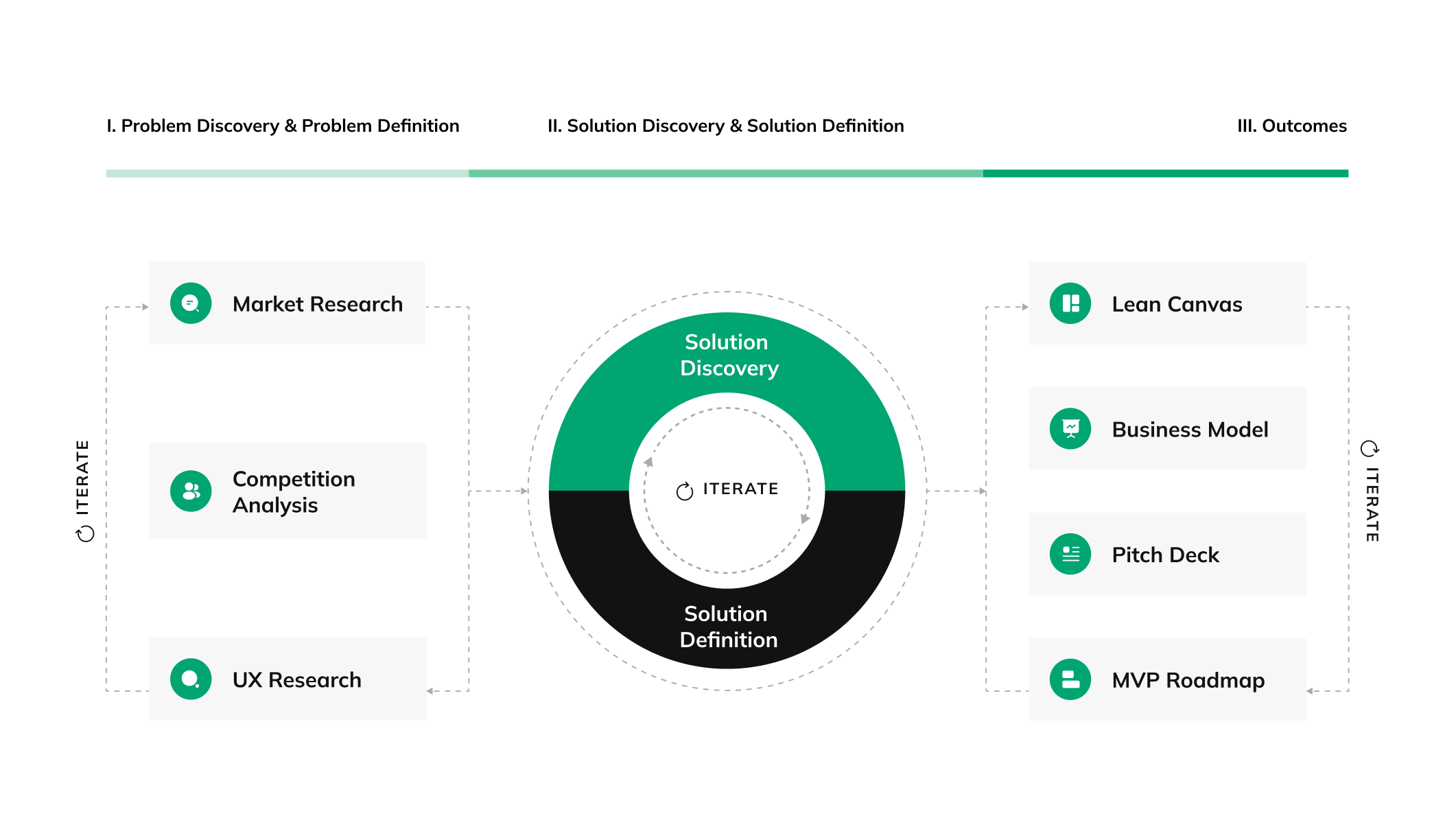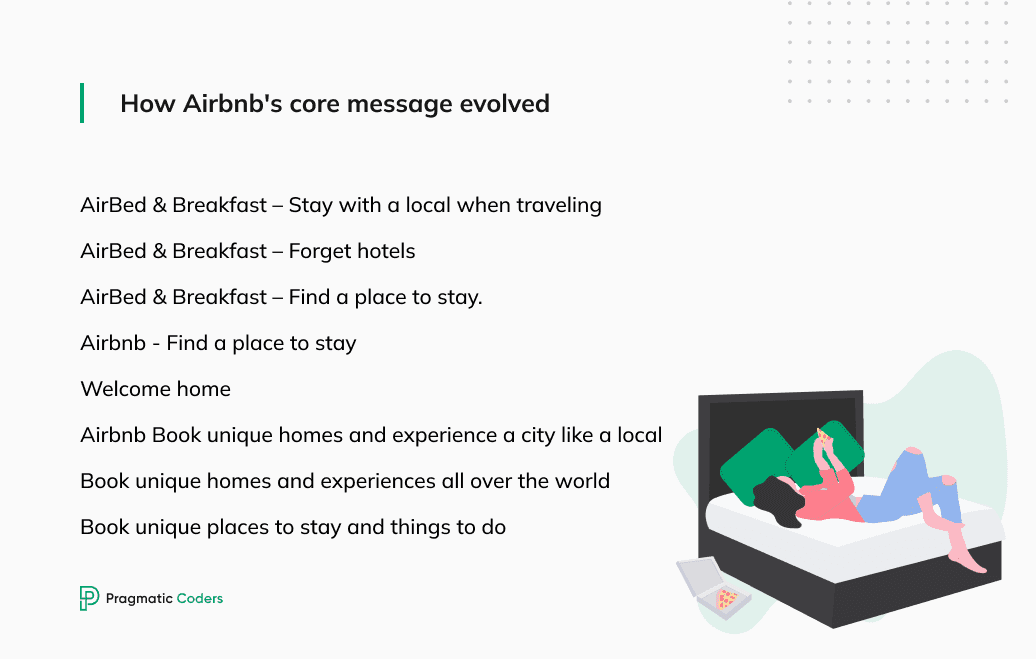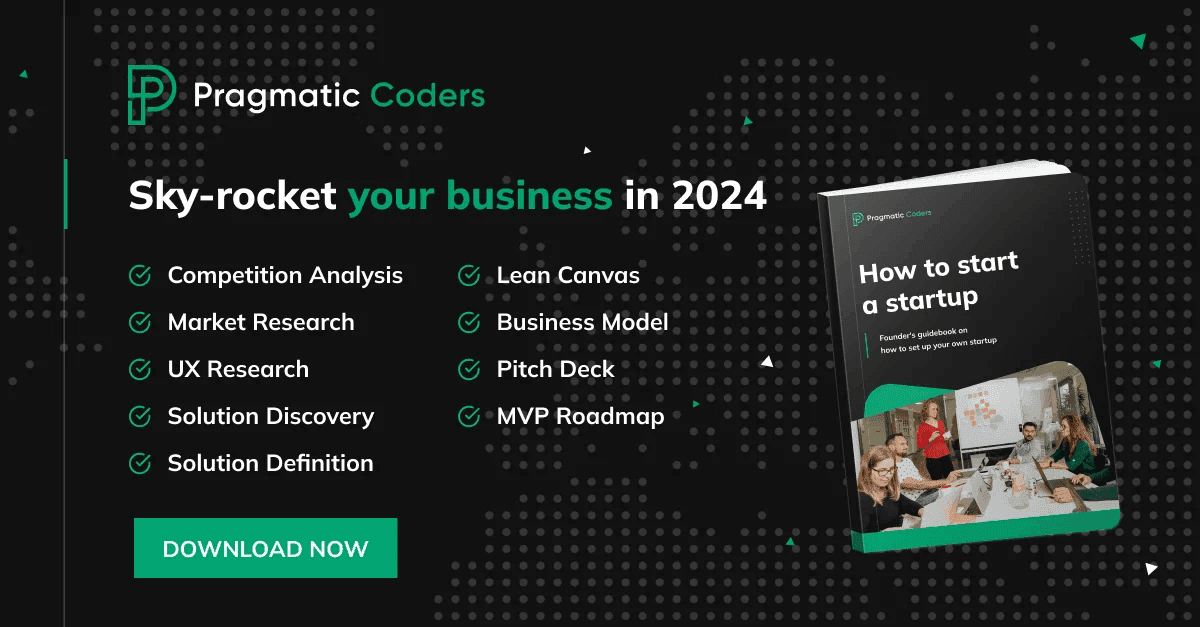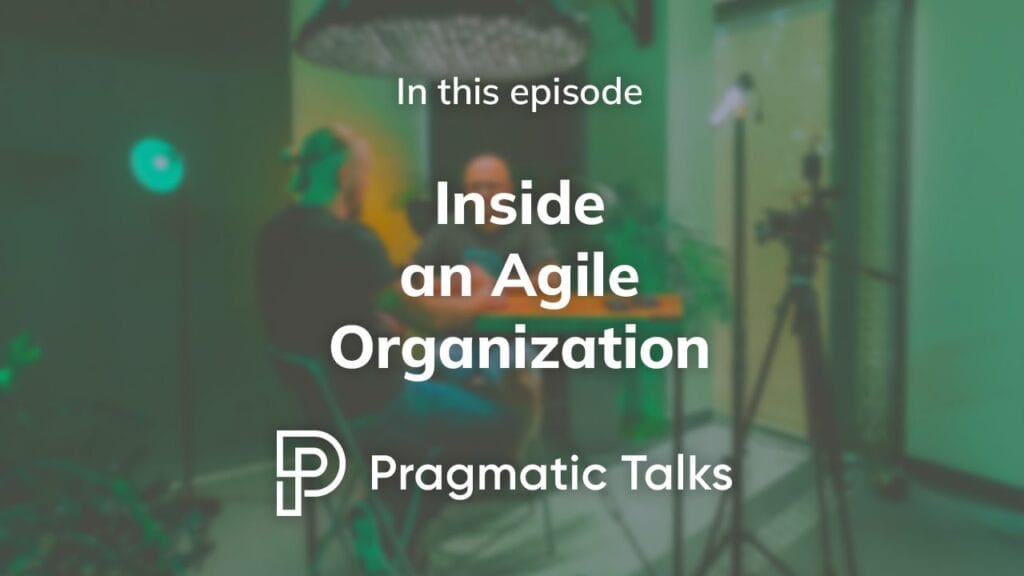How to iterate on your product? Startup guide to product iteration

Product iteration refers to the process of continuously improving a product by making small, incremental changes based on user feedback, testing, and data analysis. It’s a core concept in Agile software development methodology and is essential for maintaining a competitive edge and ensuring customer satisfaction.
In this article, we’ll explain how to effectively iterate on your product, why product iteration is a must-have element for any successful software product, and how to integrate continuous product discovery into the iteration process.
What is product iteration?
Product iteration is the cyclical process of making incremental improvements to a product. This involves:
- Building new features or updates.
- Measuring their performance through user feedback and data analysis.
- Learning from the results to refine and improve the product further.
- Repeating this cycle continuously to ensure the product evolves and adapts to user needs.
What is product discovery?
Product discovery is the ongoing process of research: understanding what users need, validating solutions, and making informed product decisions about what to build, how to build it, and how to improve it.
It’s crucial to remember that product discovery is a process, not a one-time phase. You want to repeat it all the time as you progress in the product development process. It applies to any stage of developing a product, whether you’re building a completely new app, or tweaking an existing product.
Watch Jakub, our Product Manger, explain why Product Discovery is a continuous process:
How are product iteration and product discovery connected?
Product iteration is about taking what you’ve learned from discovery and making improvements to your existing product. It’s a cyclical process where you build, measure, and learn. You release a new feature or update, gather feedback on how users interact with it, and then use that feedback to refine the product further.
Here’s an analogy: Imagine you’re planning a road trip.
- Continuous product discovery is like researching different routes, understanding traffic patterns, and figuring out what kind of car you need.
- Product iteration is like actually driving the route, making adjustments along the way (like taking a detour or stopping for gas), and then planning future trips based on your experience.
In short, continuous product discovery helps you decide the right direction for your product, while product iteration helps you improve it as you go. They work together to create a successful product that meets user needs.
What is a product discovery team?
As you’ll see later in the article, the process of product discovery is not only iterative, but also multiphase. Depending on the area, it will involve roles and activities.
Nevertheless, here are the roles that are essential for product teams to include.
- Business founder
- UX team (one or more people with the competencies of a UX researcher + UX designer). It should consists of a UX researcher (to conduct your user research) and a UX designer (to approach the solutions generated during discovery process design-wise). Apart from that, the UX team should be ideally more or less involved in all stages of discovery – serving as a connections between the product and its users.
- Product manager – brings in their knowledge of the market and competitors, manages the product, and, ideally, participates in UX research.
- Tech leader – gives feedback regarding the feasibility of the solution ideas and provides information regarding the technology that would be required to build them.
Build the RIGHT product. Why you must focus on product discovery
The product discovery process will help you answer three essential questions:
- What is the right solution for the problem you want to address?
- What solution are you able to provide?
- How can you build it right?
With this you can maximize your chances of success and avoid unnecessary waste or costs. And avoiding unnecessary waste matters. Why? Because with money and time saved, you’ll be able to carry out more experiments, stick to a limited budget longer, learn more about your clients and market, and buy yourself time to get traction (and funding).
Facing cost overruns or a stalled iteration roadmap? Our Project Rescue services specialize in untangling complex codebases, revitalizing product strategy, and putting your team back on a tight build-measure-learn loop.
We’ve explained the entire product-building process in our free e-book, How to start a startup. Be sure to check it out!
Steps in the iterative product development process
If we were to explain product iteration in one word, that would be: testing.
Iterative approach to product development is basically doing a lot of cheap, continuous testing. You come up with a hypothesis (for example, a feature idea), launch it, see how users react to it, and draw conclusions–and then you repeat the process again and again. The shorter the feedback loops (the faster you can create a hypothesis, test it, and analyze the results), the better.
Check how Tomek Wykowski, Agile coach, explained this in one of Pragmatic Talks episode:
1. Build
Start by developing a new feature or making changes to an existing one. This step involves:
- Prototyping: Creating a basic version of the new feature. Nowadays, you can make prototypes very quickly with the help of AI.
- Developing: Building the feature based on the prototype and initial user feedback.
2. Measure
After launching the new feature, gather data on its performance:
- User feedback: Collect qualitative data through surveys, interviews, and usability tests.
- Analytics: Use tools to track quantitative data such as usage patterns, engagement metrics, and error rates.
3. Learn
Analyze the data to gain insights into how users are interacting with the new feature:
- Identify pain points: Determine what users like and dislike.
- Validate hypotheses: Check if the feature solves the intended problem and meets user needs.
4. Repeat
Use the insights gained to refine and improve the feature:
- Implement changes: Make necessary adjustments based on the feedback.
- Test again: Release the updated feature and start the cycle over.
How to iterate on a product? Example: Airbnb’s iterative process
Airbnb’s success story is a testament to the power of continuous improvement. They didn’t just launch a website and call it a day. Instead, they embraced a culture of iteration, constantly testing new features and refining their platform based on user feedback and data analysis. This approach ensured their offerings stayed relevant and catered directly to user needs.
It all began with a simple observation in 2007. With a design conference flooding San Francisco’s hotels, the founders saw an opportunity. They started with a basic idea: offering spare rooms and breakfast to conference attendees. This humble website, Airbedandbreakfast.com, grew into the billion-dollar giant we know today.
The key to their growth? Rapid iteration. Each new version of the platform tested different messaging and functionalities, validating their hypotheses. This constant learning cycle allowed them to adapt their core message as their user base and the travel landscape evolved.
This is how their core message has been changing over time:

… and then they realized they did not need any slogans anymore since everyone knows what Airbnb is today.
Iterative development FAQ
What is an iterative product?
An iterative product is one that constantly evolves through cycles of development, testing, and refinement.
What is iteration in product design?
Iteration in product design refers to making repeated improvements based on user feedback.
What is product management iteration?
Product management iteration involves refining the entire product, not just the design, through testing and user feedback loops.
How do you apply iteration?
Apply iteration by starting with a basic product, gathering user feedback, and making improvements in cycles.
Product iteration in product development. Conclusions
To sum up, let’s reiterate the key aspects of product discovery.
- Product iteration is an ongoing process of getting user feedback, validating the solutions your provide, and adjusting your product based on that. It complements and precedes product delivery.
- It provides value. It can help product teams build a product people want to use, stay aligned with business goals, and not miss any market opportunities. It gives you a good idea of whether your new product or feature will be used.
- It is applicable ALL THE TIME. Are you building a new product? Or, maybe, you’re improving an existing one, and want to add a new feature to your product? Product discovery & iteration helps do it right, whether we’re talking about creating a minimum viable product from scratch or modify a mature app.
Need help with product iteration? Check out our tailored product discovery workshops!









